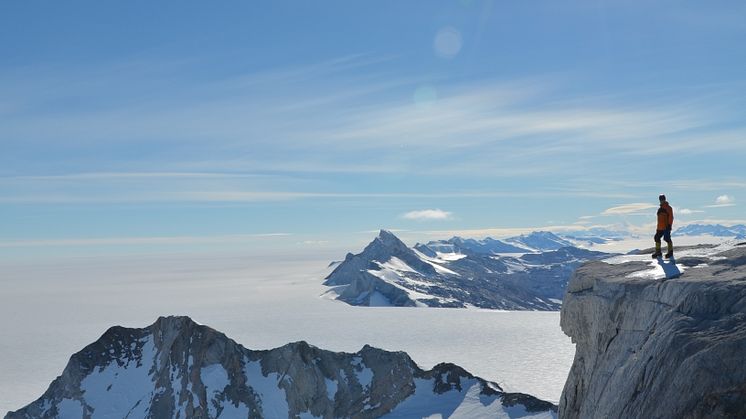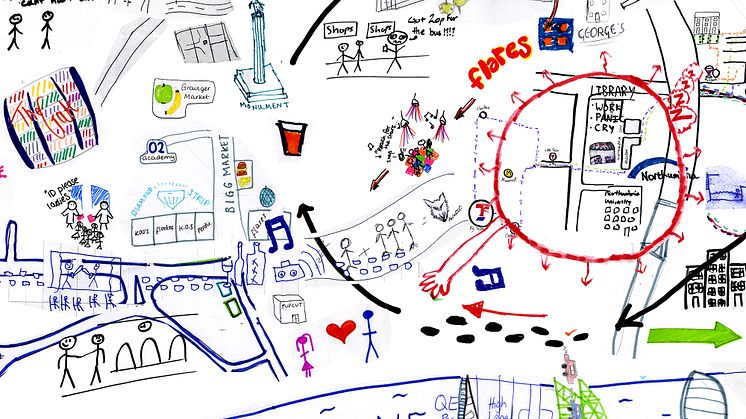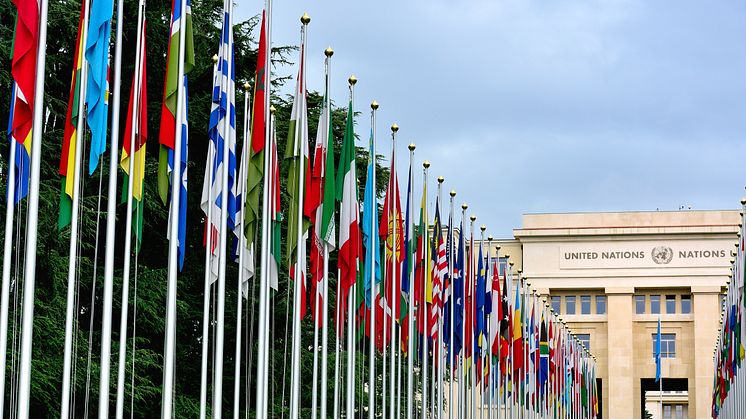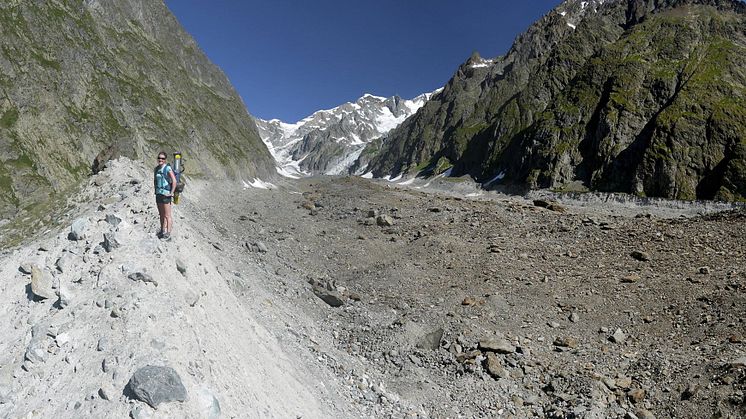Press release -
EXPERT COMMENT: Santorini eruption: new theory says ‘pyroclastic flows’ caused devastating Bronze Age tsunamis
Matthew Pound, Lecturer in Physical Geography at Northumbria University, writes about the Santorini eruption for The Conversation.
Take the ferry to the beautiful Greek islands of Santorini and you will sail into a truly unique landscape forged by a cataclysm towards the end of the Bronze Age. From either the north or south your ship will leave the brilliant blue seas of the Aegean and enter a natural harbour flanked by majestic cliffs. Ferries pass between the large island of Thira and the smaller island of Thirasia, while straight ahead a small island in the centre of the natural harbour, Nea Kameni, looks like a molehill surrounded by mountains.
It is on Nea Kameni, among hot springs and sulphurous vents, that you can begin to understand the natural history and formation of this island. The harbour, the cliffs, the elegant white houses with blue roofs; all are part of a huge volcano.
Sometime during the mid-second millennium BC, Santorini erupted. It was one of the biggest volcanic events in human history. In the past 800 years only Mount Tambora in Indonesia has erupted with such force, and Tambora was responsible for a global “year without a summer” in 1816.
The eruption sent devastating tsunamis across the eastern Mediterranean that smashed into the Minoans on Crete, at the time one of the world’s most advanced civilisations.
The Santorini volcano is a caldera, a type of volcano that erupts so violently that its middle collapses in on itself forming a huge crater. How this crater came to be is the focus of a new paper in Nature Communications by Paraskevi Nomikou and colleagues. They have published high-resolution seabed maps and combined these with seismic evidence for what rocks the seabed is made of in the caldera to explain how the volcano collapsed, filled with water and might have produced tsunamis.
Prior to the eruption the modern caldera did not exist. Instead a smaller caldera, from a much older eruption, formed a lagoon at the north of the solitary island. Near the modern town of Akrotiri stood a Minoan settlement, a bustling town with three-storey buildings, narrow streets and courtyards, quite different from the palace complexes found in the Minoan homeland of Crete. The prehistoric Akrotiri may have been home to hundreds or thousands of people, and was probably an important trading port for the eastern Mediterranean.
The eruption first blasted ash high into the sky, which settled back down onto the settlements and farmland. This terrifying but not immediately catastrophic stage might have given the locals early warning and caused them to abandon the island (no bodies have been found among the archaeology, which implies residents probably fled).
As the ash continued to be thrown into the air, the island would have been eerily dark with fragments falling from the sky – imagine a severe rainstorm, but of ash and dust. As the ash column grew to its full height it entered the stratosphere and began to spread out and drift east. Ash from this eruption has been found in Turkey, the Aegean islands and Crete.
In the next stage of the eruption pyroclastic flows, hot landslides of volcanic material that travel faster than F1 cars, charged out of the volcanic cone building up large fans that blocked the northwest straits and isolated the caldera from the Mediterranean Sea.
The eruption continued to increase in violence with multiple cones sending out considerable amounts of pyroclastic flows. Deposits of these flows reach 60 metres thick (the height of around 14 double decker buses) and engulfed the Minoan settlement at Akrotiri, creating a Bronze Age Pompeii and a spectacular window into an ancient civilisation in the 1600s BC.
It is during this stage that Nomikou and colleagues propose that tsunamis would have been generated. In Crete, 120km away, a nine metre-high wave tore up the northern side of the island leaving devastation and debris in its wake. The waves may have reached western Turkey and even Israel.
The seas eventually settled, the eruption ended, and the modern caldera began to form. Erosion by the sea and a catastrophic landslide opened the north-west strait, filling the caldera from the surrounding Mediterranean in a couple of days; further landslides into this full caldera formed the southwestern straits. Completing the modern geography would take several thousand years more as the island of Nea Kameni, an active volcano, gradually erupted above sea-level.
While catastrophic, terrifying and probably life-changing for large numbers of people, the Minoans themselves didn’t die out. Though Santorini was not recolonised, evidence from pottery shows civilisation on Crete continued for several generations. However, as a society built on maritime trade the loss of the port of Santorini, which had direct links to the important bronze-producing island of Cyprus, might have diminished their position among the trading powers of the eastern Mediterranean.
This article was originally published in The Conversation. Read the orginial article here.
Topics
Categories
Northumbria is a research-rich, business-focused, professional university with a global reputation for academic excellence. To find out more about our courses go to www.northumbria.ac.uk
If you have a media enquiry please contact our Media and Communications team at media.communications@northumbria.ac.uk or call 0191 227 4571.










